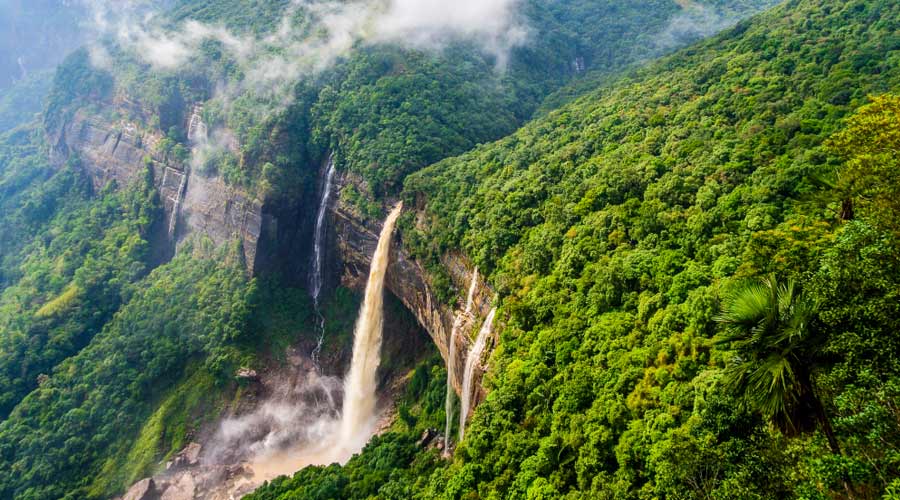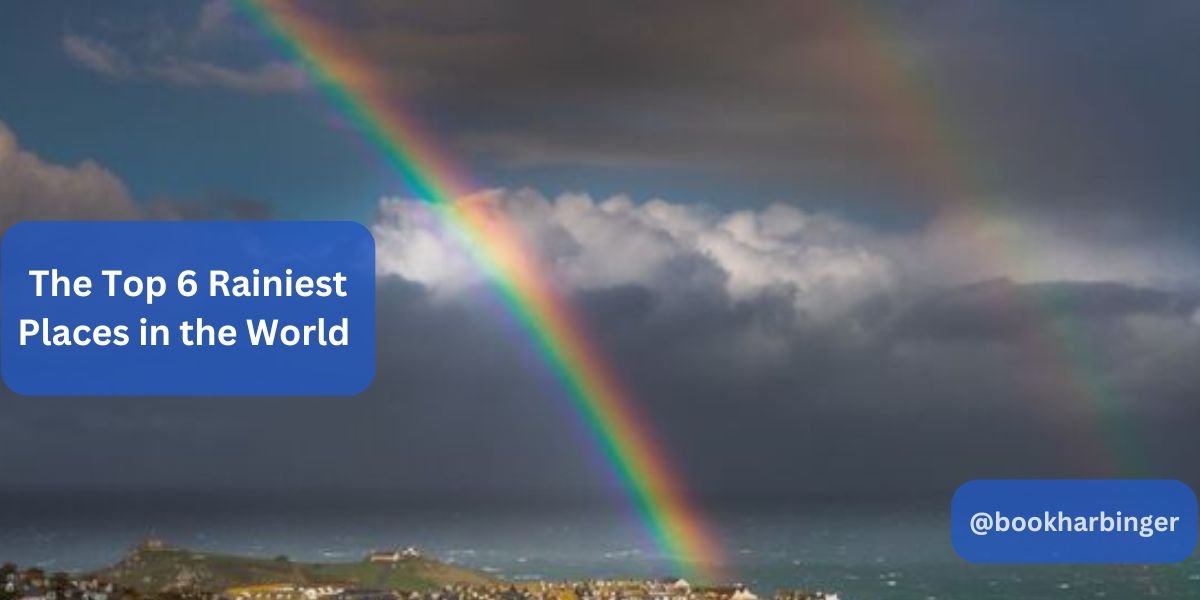Have you ever wondered where umbrellas might feel most at home? Or where raincoats are a staple in daily fashion? Join me as we dive into the fascinating world of the top six rainiest places on Earth. If you’re picturing constant downpours and lush landscapes, you’re on the right track!
The Unrelenting Showers of Mawsynram, India

Mawsynram – The Reigning Champion of Rain
Nestled in the verdant hills of Meghalaya, India, Mawsynram is a name synonymous with rain. Claiming the title of the wettest place on Earth, it receives an astonishing average annual rainfall of 467.4 inches. But what makes Mawsynram such a magnet for monsoons?
The Geography Behind the Deluge
It’s all about location. Mawsynram sits bang in the path of the Bay of Bengal’s monsoon winds. These winds hit the steep hills, ascend, and cool rapidly, dropping their moisture as incessant rains. For the locals, this is both a blessing and a challenge—cultivating lush crops while keeping the hillsides from washing away.
Cherrapunji: A Stone’s Throw from Mawsynram

Cherrapunji – A Close Contender
Just a short drive from Mawsynram, Cherrapunji nearly matches its neighbor’s rainfall, with about 463.7 inches annually. Interestingly, it once held the record that Mawsynram now boasts.
Living Root Bridges: A Marvel of Ingenuity
In response to their environment, the ingenious Khasi tribe of Cherrapunji has woven living root bridges from the aerial roots of rubber trees. These become natural aqueducts and walking paths, illustrating a beautiful example of adapting to one’s environment.
Colombia’s Pacific Coast: Where the Ocean Meets the Rain

Bahía Solano – Colombia’s Rainy Retreat
Bahía Solano, on Colombia’s Pacific coast, is a haven for biodiversity, thanks to its average rainfall of 354 inches per year. The rain supports a dense jungle, which in turn nurtures an incredible array of wildlife.
A Hotspot for Ecotourism
The relentless rain might deter some travelers, but for eco-tourists, it’s a paradise. The lush landscape and abundant wildlife make it an ideal spot for those looking to explore nature in its most undisturbed form.
The Persistent Precipitation of Tutunendo, Colombia

Tutunendo – A Close-Knit Rainy Community
Not far behind is Tutunendo, another Colombian town where the rain scarcely stops, pouring down about 348 inches annually. This small town has developed a lifestyle that embraces the rain, with vibrant community life continuing under cover.
How Rain Shapes Culture
In Tutunendo, rain has shaped a culture of resilience and community. Local festivals, market days, and even daily social interactions often happen indoors or under protective coverings, creating a unique social atmosphere.
The Never-Ending Nimbuses of Debundscha, Cameroon

Debundscha – At the Foot of Mount Cameroon
At the base of Mount Cameroon, Debundscha basks in roughly 322 inches of rainfall each year, making it Africa’s rainiest spot. The mountain acts as a barrier that forces incoming humid air from the Atlantic to rise and release a continual mist.
A Challenge for Agriculture
While the rain is essential for the lush vegetation, it poses significant challenges for farming, often washing away soil and nutrients. The locals have adapted by using terracing and other soil conservation techniques to farm effectively.
Cropp River: New Zealand’s Waterlogged Wonder

Cropp River – A Torrential Testament
On New Zealand’s South Island, the Cropp River gushes through landscapes that receive about 453 inches of rain annually. This makes it one of the wettest places in the southern hemisphere.
The Impact on Local Flora and Fauna
This deluge supports a unique ecosystem. The dense forests around Cropp River are some of the most pristine in the world, offering a haven for species that thrive in wet conditions.
Conclusion
While these spots might test the endurance of their residents, they also represent remarkable natural phenomena that highlight the diversity and adaptability of life. From Mawsynram to Cropp River, each place offers a unique story about how nature and humans coexist in the face of persistent precipitation.
FAQs:
What makes a place receive so much rain?
Geographic location, prevailing wind patterns, and topographical features like mountains play significant roles in determining how much rain a place receives.
Are these locations populated, or are they mostly uninhabitable?
Despite the challenges, many of these areas have thriving communities that have adapted their lifestyles to cope with the excessive rainfall.
What kind of vegetation is common in these rainy locations?
Dense rainforests with a high diversity of flora, including ferns, mosses, and a wide array of tree species, are common in these wet climates.
How do animals adapt to such wet environments?
Animals in these areas often have adaptations like water-resistant coats, behaviors that allow them to thrive in wet conditions, and diets that make use of the lush vegetation.










